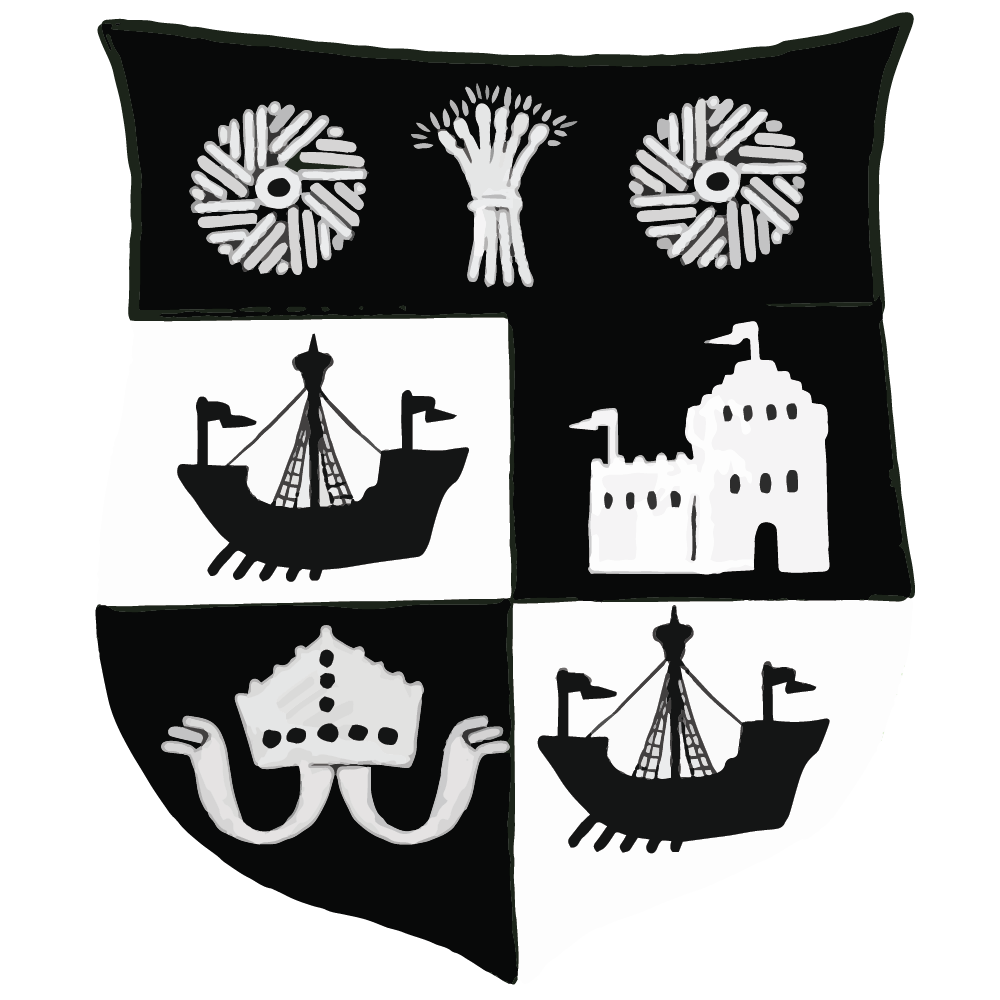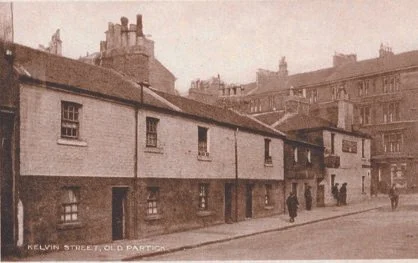A journey through time
Welcome to Partick
Explore the vibrant layers of Partick’s past through this detailed heritage trail. From medieval mills to Victorian grandeur, shipyards to contemporary community life, the story of Partick reflects the transformation of Glasgow itself.
Origins and Ancient History
Partick’s recorded history stretches back to 1136 when King David I granted lands at "Perdeyc" to the Church of St Kentigern. By 1147, the church held the parish of Govan, which included the sandbanks (or "inches") along the Clyde, later integrated into the Partick area. The Bishops of Glasgow maintained a residence here by the late 13th century, and mills operated by the River Kelvin shaped the village's early economy.
Medieval Partick featured mills, a river crossing dating back to at least 1577, and a clachan called the Byres of Partick—likely linked to the Bishop's agricultural holdings. The village was documented by Timothy Pont in his 1590s survey.
Shipbuilding, Mills and Local Industry
From weaving and dyeing to shipbuilding, Partick’s economy evolved with Glasgow’s. The Bunhouse Mill, Scotstoun Mill, and the Regent Mill were key grain and cloth-processing sites. Papillon’s Turkey-Red dye technique and numerous sawmills, foundries, and ironworks also operated in the area.
The Pointhouse Yard of A & J Inglis (opened in 1862) and the D & W Henderson drawing office are among Partick's lasting shipbuilding legacies. Meadowside Granaries and the Regent Mill marked the area's role in large-scale industrial storage and processing.
Churches, Schools and Culture
St Simon’s RC Church (1858) is the oldest in Partick, with deep roots in the Irish and later Polish communities. Dowanhill Church, now Cottiers Theatre, and St Peter’s RC Church (1903) are architectural and cultural highlights.
Schools such as Dowanhill Primary (1896) and the former St Peter’s School in Stewartville Street played formative roles. The University Café (1918) remains a beloved social institution.
Postwar Changes and Redevelopment
The 1960s and '70s brought major demolitions. While many tenements were lost to roadworks and modern infrastructure, areas like Partick Cross and Beith Street were redeveloped. Crathie Court, the new Partick Police Station, and Mansfield Park’s rebirth are examples of community-led revitalisation.
Meanwhile, projects like Glasgow Harbour have reshaped the skyline, replacing granaries with residential towers.
Industrial Expansion and the Burgh Era (1852–1912)
As the 19th century progressed, Partick grew rapidly from a rural village to an industrial centre. The arrival of Tod & MacGregor’s iron shipyard in 1844 marked a turning point. The population tripled in 20 years, reaching over 5,000 by 1850.
In 1852, Partick gained burgh status, with David Tod serving as its first Provost. The Burgh Commissioners implemented public infrastructure, street lighting, drainage and more. Grand civic buildings like the Partick Burgh Hall (1872) reflected this growing pride and prosperity.
The motto Industria Ditat ("Industry Enriches") underscored this transformation.
Social Life and the Steamie
Inns and taverns were central to village life. The Bun and Yill House, Granny Gibb’s Cottage, and Old Bridge Inn were beloved local institutions. The “Partick Duck Club” symbolised these gathering spots' cultural importance.
The Partick washhouse ("steamie") was a community hub from 1912 to the 1990s. Tony Roper's play The Steamieimmortalised its role in women’s social life. It was demolished and replaced with flats, marking the end of an era.
Civic and Public Spaces
Partick Burgh Hall remains a focal point of civic pride, with its French Renaissance design and community role. Fortrose Street, Peel Street and Gardner Street reflect Victorian and postwar urban layouts, with steep hills and iconic buildings.
Parks such as Thornwood Park and Dowanhill Park (the "Wee Park") offer green relief amidst dense tenements. Crathie Court, built in the 1950s, is an award-winning example of postwar social housing.
Present-Day Partick
Today, Partick is a thriving, diverse community that retains a strong sense of identity. Though many historic buildings are gone, housing associations and preservation efforts have maintained the area's character.
Newcomers from around the world have added to the cosmopolitan feel, while long-standing residents maintain deep ties. The trail of 53 sites reflects Partick's layered narrative—one of resilience, reinvention, and pride.
This version of the Partick Heritage Trail was adapted from Gordon R. Urquhart's 2011 revision, with support from Glasgow City Council and Partick Housing Association.








